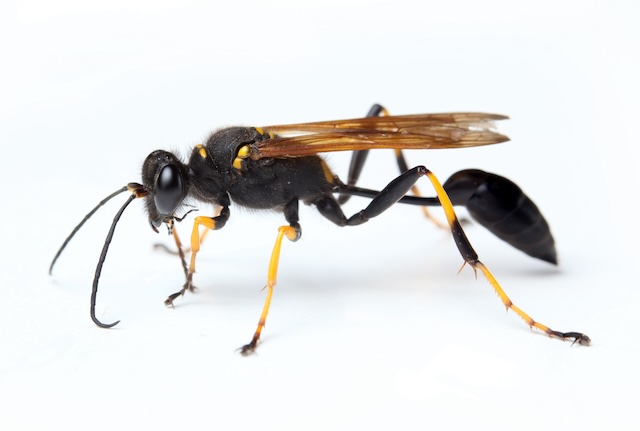Ontario’s large landscapes and diverse ecosystems make it a home for many kinds of wildlife, including several types of wasps. Knowing the common wasp species in this area is not only interesting for nature lovers, but also necessary for people who want to live in harmony with these buzzing bugs. This guide goes into detail about the unique traits and behaviours of some common wasp species in Ontario. It also gives information about where they live and what they do.
1. Paper wasps (Polistes spp.): Natural Artists
Paper wasps are common in Ontario. Their beautiful, open-celled houses look like upside-down umbrellas and help you identify them.
Behaviour: Paper wasps are usually not as mean as their more violent relatives. They can get angry, though, if their nests are disturbed. These hardworking bugs help keep pest numbers in check by eating other bugs.
2. Yellowjackets (Vespula spp.): Experts at Building Underground
Identification: Yellowjackets are easy to spot because they have unique black and yellow marks on their bodies. Often, they build their nests in holes in the ground or in trees.
Behaviour: Because yellowjackets are known to defend their nests aggressively, they can sting you. This is especially true since their nests are usually hard to spot. Being aware of their presence is important to keep them from disturbing you by chance.
3. Hornets (Dolichovespula spp.): Grand Architects in the Sky
Identification: Hornets are bigger than most other wasps and build big nests in trees, bushes, or buildings that hang from the air.
Behaviour: Hornets are very protective of their nests and can get angry if they are bothered. Some species, like the bald-faced hornet, have very strong stings, which makes living together safely even more important.
4. Mud Daubers (Sceliphron spp.): Master Crafters of the Mud
To tell them apart, mud daubers build their nests out of mud tubes that they connect to walls or ceilings.
Behaviour: Mud daubers are usually not violent, unlike some other species. Their nests are where immobile spiders live and lay their eggs.
5. Bald-Faced Hornets (Dolichovespula maculata): Alert and Ready to Strike
Bald-faced hornets are easy to spot because they are big and their black and white colouring is very striking.
Behaviour: Bald-faced hornets are naturally wary, and they can get mean if their nests are disturbed. Because their stings are known to be very strong, homes need to be aware of where their nests are.
Why it’s Important to Know Your Wasps:
Safety First: Knowing about the different kinds of wasps helps people figure out what risks might be involved, which makes living together safer.
Strategic Pest Control: Figuring out which species of wasps are bothersome helps with putting together targeted pest control plans, whether you do it yourself or hire a professional.
natural Appreciation: Learning about the natural roles of wasps helps you understand how nature in Ontario works together.
Getting Along with Wasps:
Careful Observation: Check your property often for wasp nests, especially during months with a lot of activity. Finding babies early is important for taking care of them before they become a problem.
Professional Help: If you find wasp nests near your home, you might want to hire a pest control service to help you get rid of them safely and effectively.
Community Education: Teaching neighbours and other people in the community about common wasp species helps everyone understand them better and encourages living together responsibly.
Learning about the common wasp species in Ontario is the first step toward living together with them. Knowledgeable residents make this diverse Canadian state a safer and more peaceful place to live by understanding things like how important they are for the environment and how to get rid of pests in a smart way.
